Into the Ring: A Closer Look at The History of Boxing
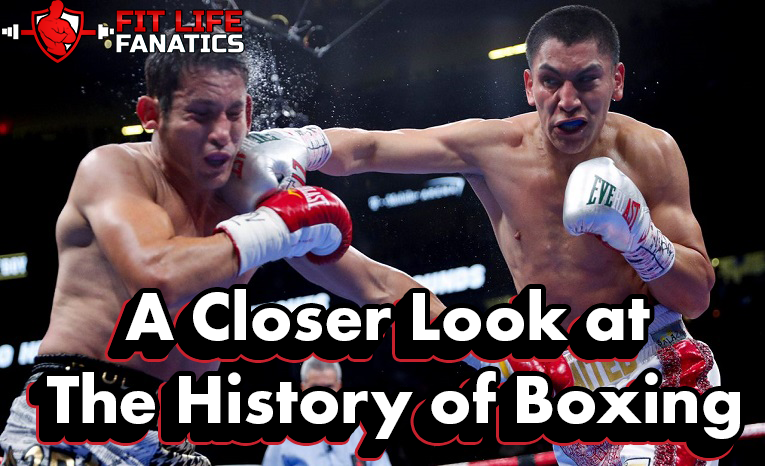
Boxing is one of the oldest sports in the world. For centuries, fighters have battled it out in the ring for the medal—and sometimes, for their lives—in an awe-inspiring test of strength, stamina, skill and speed.
What Is Boxing?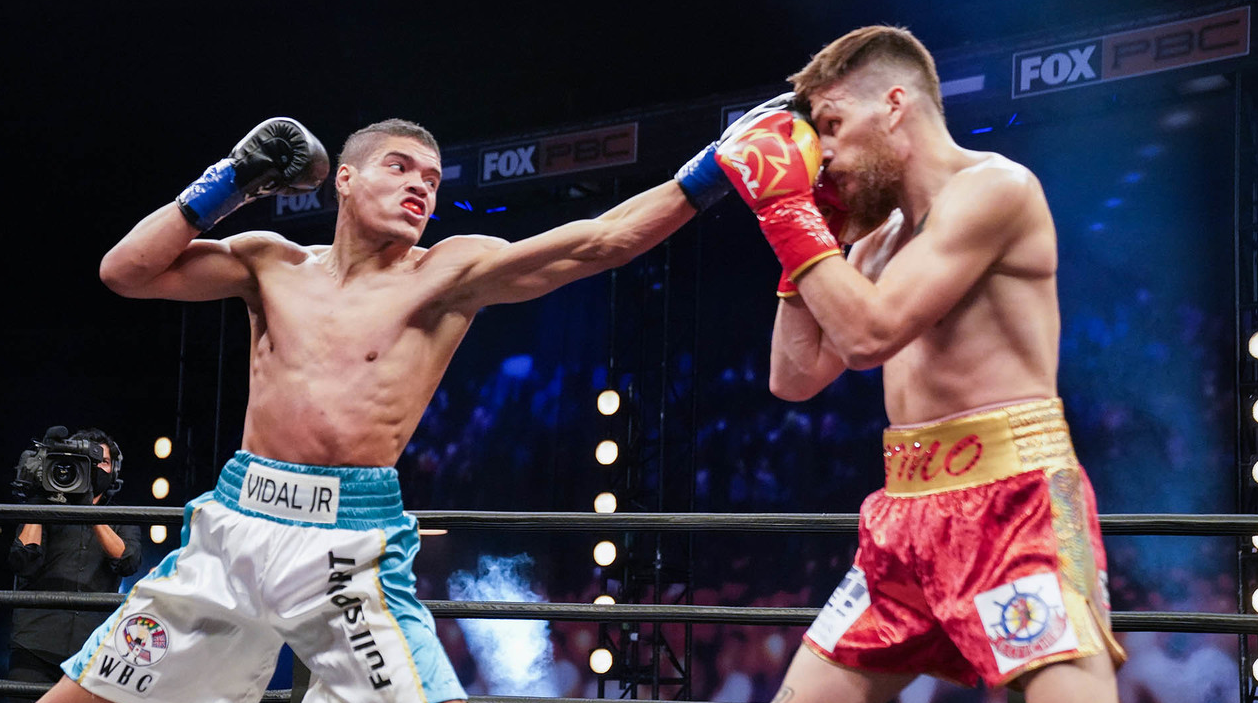
Boxing is a combat sport. And just like in other combat sports, boxing is a well developed sport in which two fighters engage in one-on-one competitive contact and try to win the game by either getting more points or rendering their opponent incapable of fighting on.
Here are some key features of the sport.
Types of Punches
A good boxer doesn’t just know how to punch hard. Boxing is a martial art game of stamina and strategy. A boxer who is fast and lasts longer in the ring can often defeat a boxer who only has strength and power.
Boxers will often use a combination of punches, and place them quickly and strategically. That’s where all the practice on punching bags to build punching power or speed bag for speed comes to fruition.
There are four different kinds.
Jab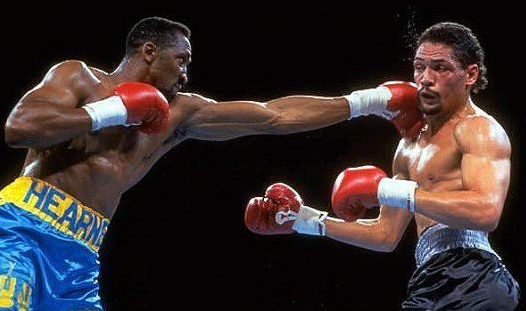
This is a straight punch thrown with a strong and quick shoulder movement. Boxers often use a series of fast, irregular jabs to confuse or force them into a defensive position.
Jabs take little energy, and can help add up points. They can also help tire out an opponent, and set the opening for a powerful punch. This was one of the key strategies of defensive fighters like Floyd Mayweather.
Heavy Cross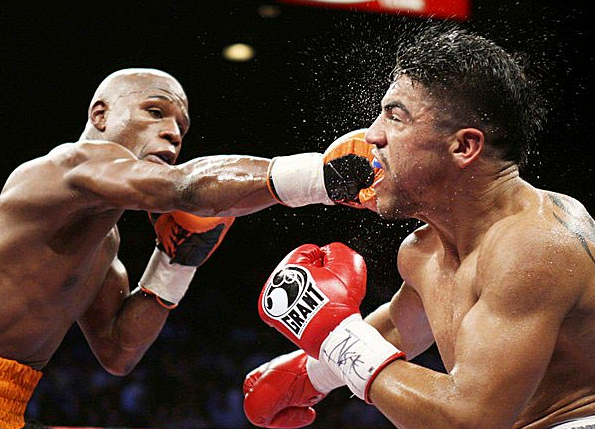
Unlike the straight punch thrown in the light jab, the heavy cross is slower but has more body power. The boxer must brace his legs and engage more muscles to deliver a lot more force in that single blow.
The heavy cross gets more points in a boxing match, and can significantly weaken the opponent. However, it has its drawbacks. As the boxer braces himself, he is in a vulnerable position for attack.
This move also takes more energy. Since boxers have to pace themselves through the match, too many heavy crosses can wipe them out before they reach the final round.
Hook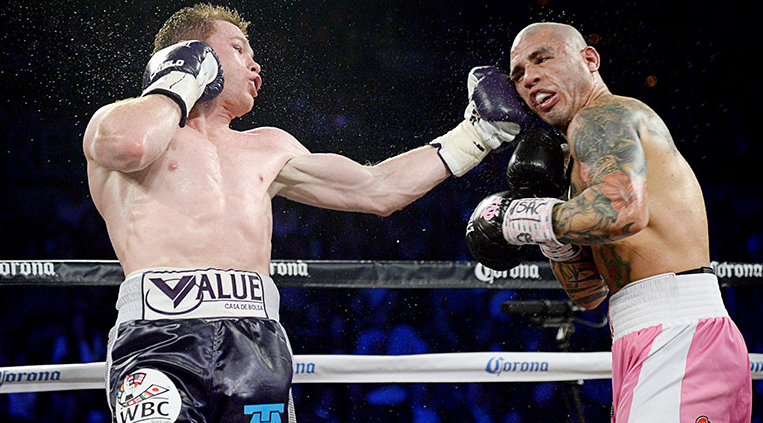
Short lateral movement of arm and fist, with elbow bent and wrist twisted inward at the moment of impact
The hook is a short lateral movement of the arm and fist. One boxer pivots his hip, then bends his elbow and twists his wrist at the moment of impact with the other boxer. This launches an attack from the side of the face (compared to the uppercut, which is usually delivered on the chin).
Many boxers combine several jabs with a sudden hook in professional bouts. With enough speed, and the perfect timing to throw a punch where they least expect it, a hook can help break an opponent’s defensive stance. And if there’s enough power in that hook, that could actually lead to much more damage or even completely knock out fighters rendering them unable to continue fighting.
Like the heavy cross, the hook delivers a lot of power but also momentarily exposes the boxer. The risk of It also uses a lot of energy, especially when it’s given after several lightning-fast jabs.
Uppercut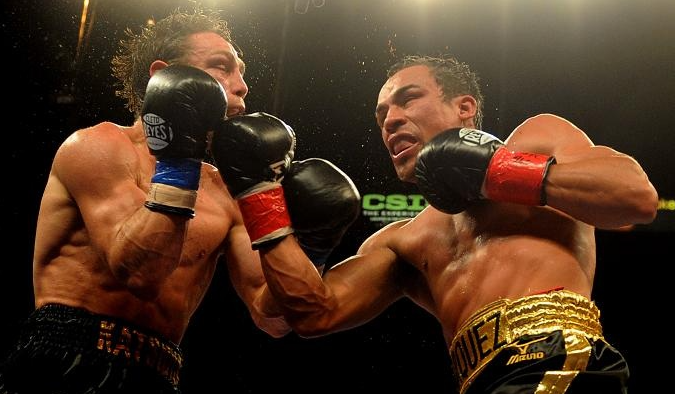
Uppercuts are a semi circular punch thrown upwards at close range, with the boxer dropping the shoulder and bending the elbow. The combination of momentum—from the slight spin of the body—and the proximity creates a forceful blow.
It was the uppercut that brought the legendary Mike Tyson down, in one of the most famous boxing upsets in history.
James “Buster” Douglas had been knocked down on the ground, and seemed destined to lose the match. But he got back on his feet, and then mustered a final burst of energy into an unexpected, explosive uppercut.
Many boxers use the fighting style of combining the uppercut with a hook or a straight punch, for a series of blows that give the opponent no time to defend or recover and knock them flat on the mat.
Many famous boxers used the uppercut to conquer the ring: Lennox Lewis, Joe Lewis, Julio César Chávez, Mike Tyson, George Foreman, and more.
However, uppercuts have a high risk of counterattack. If the opponent senses that it’s coming, he will use that window of opportunity to throw a straight punch.
Defensive Moves
Boxers use a combination of moves to avoid the punches and jockey into a good position for attack. Here are some of the most common boxing defense techniques.
Footwork
Boxers, for all their bulk, are fast on their feet. They can stay close but still dodge the punch, pivot, or move out of range. However, going too far away also means they lose the opportunity to throw punches (especially longer range punches) on target.
In professional matches like the Olympic sport or other world championships, they can also be penalized and lose points for not showing enough aggression in the boxing ring.
Blocking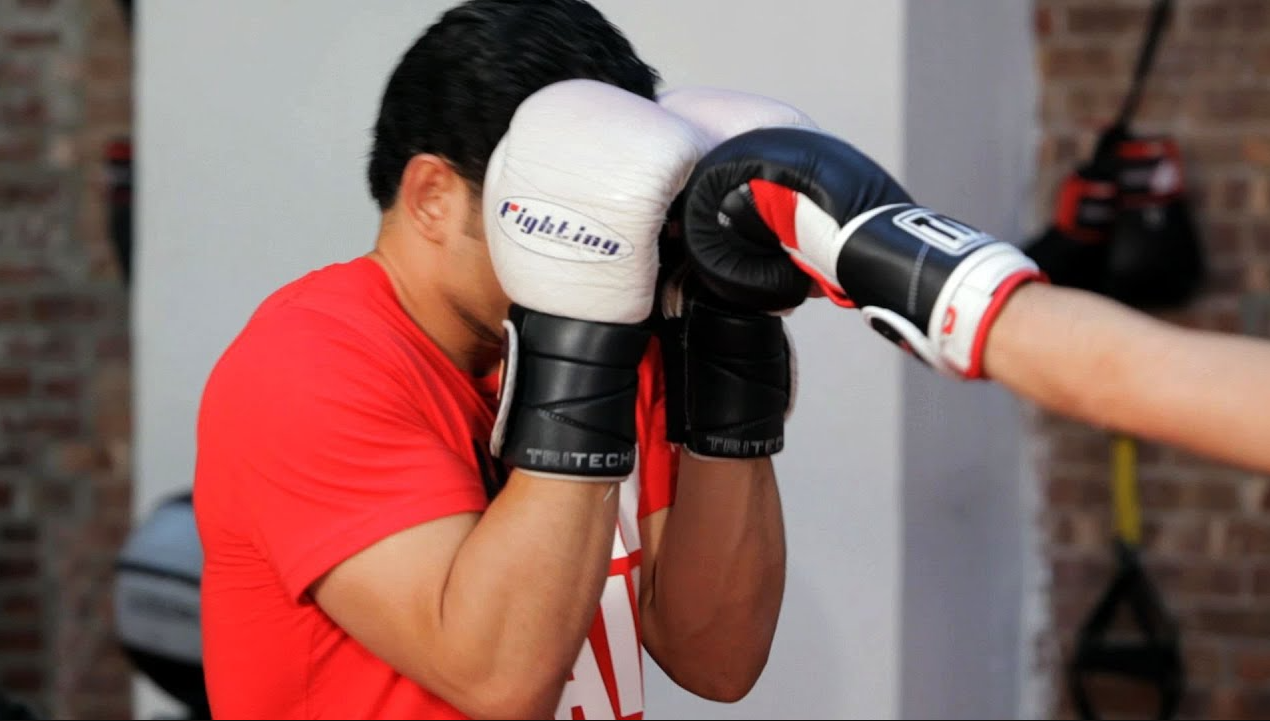
In a boxing match, blocking means covering the face and other vulnerable areas with the fists. This is usually quickly followed by a counterattack.
Parrying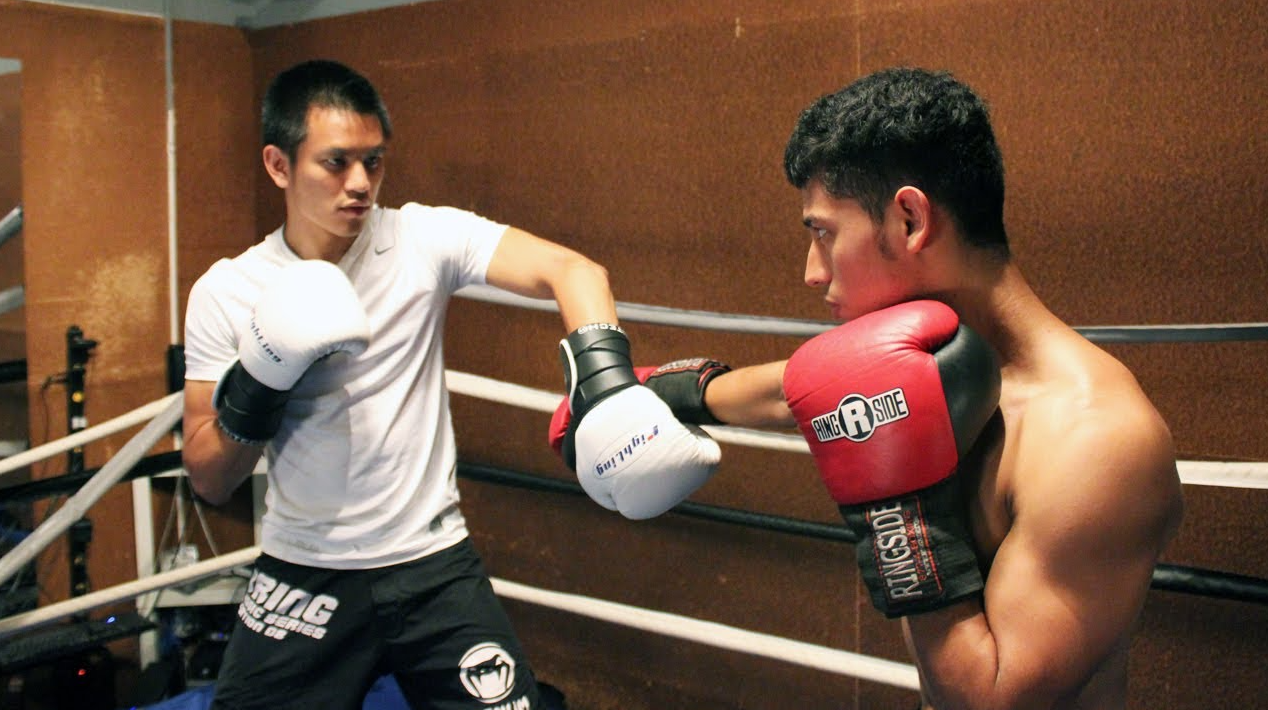
This means blocking the opponent’s arms. It gives the added advantage of using the opponent’s strength to one’s advantage, since some of the force is deflected back to them and helps tire them out.
Shoulder Rolls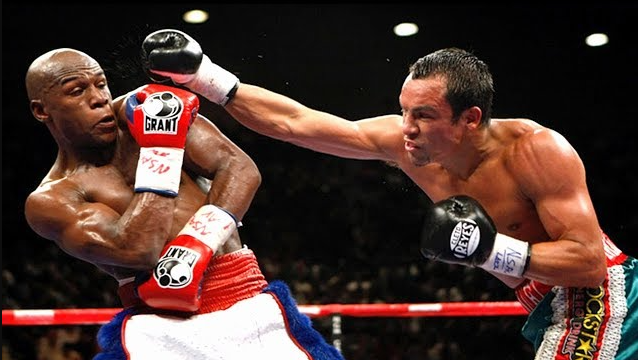
This defensive move involves pivoting the body so that the punch falls on the shoulder, thereby neutralizing even a very rapid or powerful series of jabs or punches. It also allows most boxers to counteract quickly, since the hands are free and the opponent’s head or other key areas are exposed.
The success depends on rhythm and timing, but it does have the risk of being “faked out” and rolling in the wrong direction.
Boxing Equipment
One of the reasons boxing is such a popular form of martial arts is that it doesn’t require expensive gear or even a lot of space. Some of the world’s most successful boxers, including Manny Pacquaio, Jose Aldo and Mike Tyson, were dirt-poor. But with a pair of gloves, they were able to punch their way out of poverty.
Boxing Gloves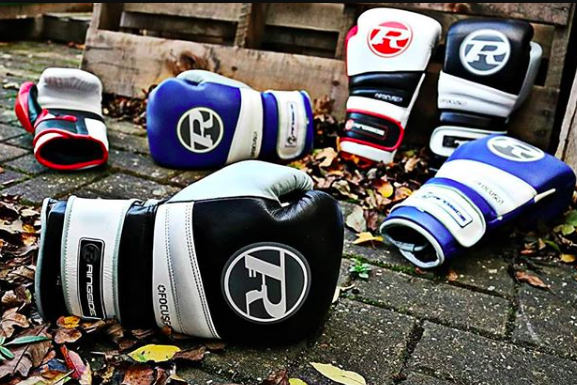
Unlike wrestling and MMDA, boxers are only allowed to attack or defend themselves with their fists. Before boxing evolved to what it is today, fighters engaged in bare knuckle boxing. However, in 1867, under the Marquess of Queensberry Rules, they were required to wear boxing gloves.
The gloves are shaped like a fist and is thickly padded to prevent any injury to the fingers, thumb, and the back of the hand. But it doesn’t just protect the wearer. Since it also lowers the speed, acceleration, and impact of the punch, it lowers the risk of injury to the opponent.
Of course, you don’t need these gloves to use in competitions where you take on other boxers, but you can use them for shadow boxing or to hit punching bags as training.
Speaking of which, there are different types of punching bags, some punching bags are better for teenagers, some are better for adults, some punching bags are great for apartments, some are great for outdoor boxing workouts. I, for example, own a Wavemaster XXL but I don’t only use boxing gloves to hit it, I also use MMA gloves.
Boxing federations have strict rules for the size and weight of the gloves for every weight class from lightweight to heavyweight championship class:
- Flyweight to Welterweight: 8 ounces
- Light-Middleweight upwards: 10 ounces
- All-female boxing competitions: 10 ounces
Safety Gear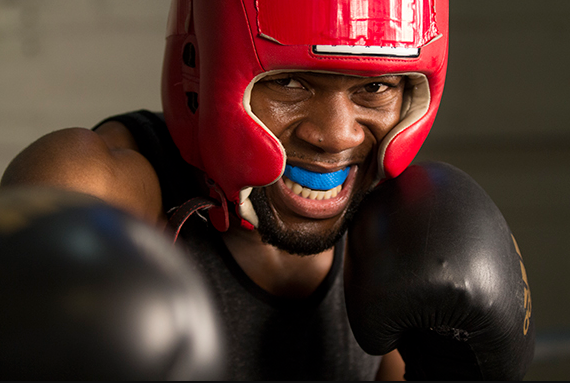
Boxers are required to wear protective hand boxer wraps under the gloves for additional support and protection. A mouthguard protects the mouth and teeth from high impact from closed fist punches, and also helps support the jaw.
Some even wear protective headgear for that extra layer of safety, but this protective gear is not very common in the boxing ring as well as other martial arts.
The rules for boxing shoes are much more lax. Some boxers fight when wearing high-cut shoes which can help support ankles, while others prefer the mobility and speed they get from low-cut shoes.
The only required feature is for shoes to have soft soles, to prevent any injuries from stepping on opponent’s feet during a boxing match.
History of Boxing
We can assume that fighting contests have been around even in prehistorical times, especially since shows of strength were often used to determine one’s position in a clan or tribe. But the first documented, earliest evidence of boxing as a sport dates back to Sumerian carvings from 3rd millennium BCE. That’s right, boxing existed that early in human history.
There are also Egyptian carvings (estimated 1350 BCE) which capture both the boxers and the crowds. A Minoan Crete Vase (estimated 1500 BCE) shows boxers wearing protective equipment like helmets and a stiff wrist plate, while other ancient Egyptian art shows them wearing a simple cloth wrist band.
The Greeks
The Greeks were the first to put clearer rules for the sport, which are captured in Greek texts. In ancient Greece, two opponents would battle it out until one acknowledged defeat by holding up their hand. The battles were held in public arenas, under scorching sunlight.
Greek boxers wrapped sharp strips of ox hide leather around their firsts. These were not meant for protection, but to scratch the opponent’s face. They only used padded gloves in practice.
Homer actually mentions the sport in The Iliad (circa 675 BCE), calling for the sons of Atrius to “content for the prizes … for the blows of boxing.”
The Romans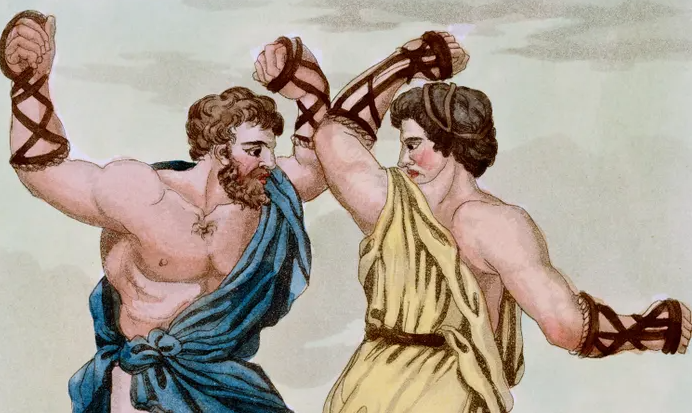
Boxing was also a popular sport among the ancient Romans during the roman empire era. The fighters—called gladiators—wore gloves called caestus, which actually had sharp spikes sewn into the rough leather bands.
Boxing was often used to train for hand-to-hand combat, but was also primarily meant to entertain spectators. In many cases, gladiators had to fight to the death – at least until one fighter succumbed from the physical damage.
London Bare Knuckle Era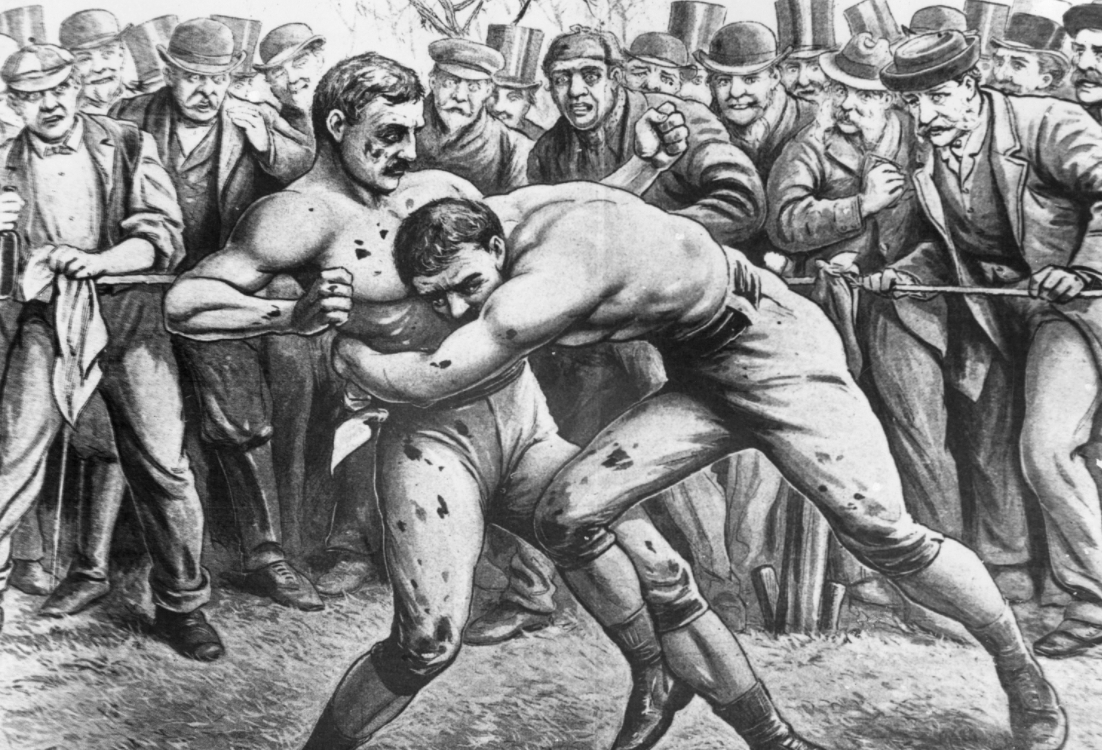
After the fall of the Greek and Roman empires, boxing continued informally, but with no set rules or any technical criteria. But in 1800s, bare-knuckle fighting became very popular in London. These fights were often held in the Royal Theater.
There were no rules and no weight classes, and it was even declared illegal. However, some fighters reached celebrity status. One of them, James Figg, was such a local hero that he was declared the champion of England in 1719.
Jack Broughton: Father of Boxing
Figg’s pupil, Jack Broughton, was the first person to set boxing rules and regulations. He announced these in 1743, including the use of mufflers to protect the hands, and establishing the concept of timed boxing rounds. He also declared it illegal to hit or grab the opponent by the waist down – in the groin area.
At this time, the British Pugilists’ Protective Association—the forerunner of modern boxing associations—was also formed to protect the interests of the fighters.
In 1838, they released the London Prize Ring Rules, which was practiced both in Britain and the United States. These rules set fouls (kicking, biting, low blows, head butting) and allowed short rests between rounds.
Queensberry Rules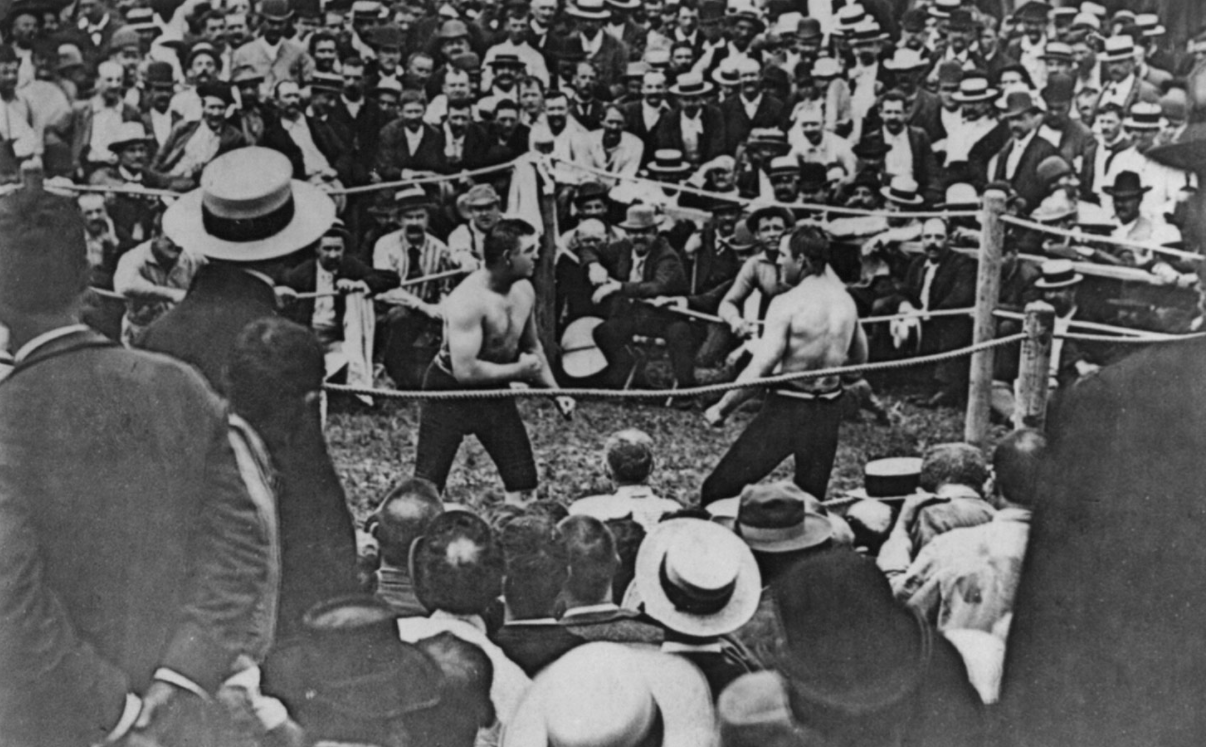
However, modern boxing as we know it is defined largely by The Queensberry Rules which firmly set the length of the rounds, and a point scoring system that rewarded a boxer’s technique and skill. Also known as the queensburry rules, these were developed by John Graham Chambers of the Amateur Athletic Club, with the support of John Sholto Douglas, the 9th marquess of Queensberry (who the rules were named after).
Unlike the London Prize Ring Rules, the boxers had to wear gloves, and each round had a set time of three minutes with a one-minute rest between rounds.
It also set the foundation for the Knockout count rule: any one participant who fell had to get up after ten seconds, or forfeit the fight. If the boxer stands before the countdown is over, they could carry on unless they were injured or unable to continue fighting.
The Queensberry Rules also established weight divisions and mandated that boxers had to be matched with opponents of similar height and physical frame.
Growth of Boxing Associations and Tournaments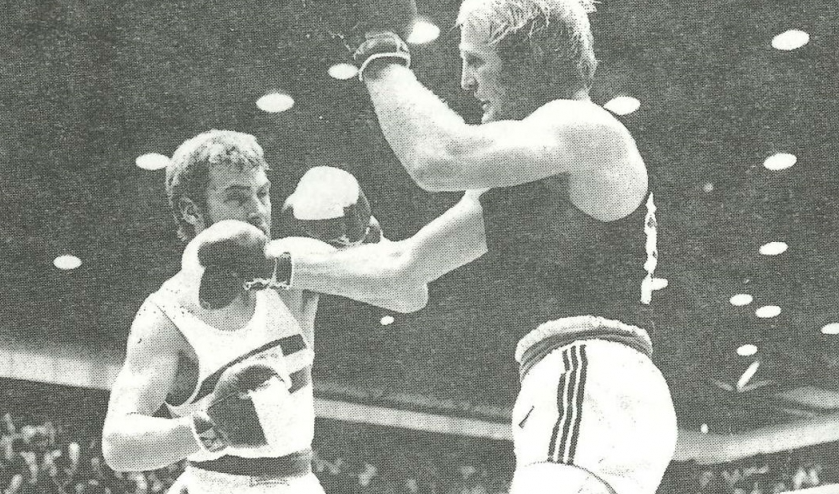
Over time, boxing shed its reputation as a “violent spectator sport” to a legitimate athletic activity that developed skill, discipline, and character. Collegiate level boxing started becoming popular, and in 1867, the first varsity match was held between Oxford and Cambridge.
In 1880, the Amateur Boxing Association (ABA) was established, and started holding regular annual championships. Other associations were formed, and as the sport become popular all across the world, these aossications helped mount international tournaments. These include the common ones today like the European Games, the Commonwealth Games, and more.
Commercial Entertainment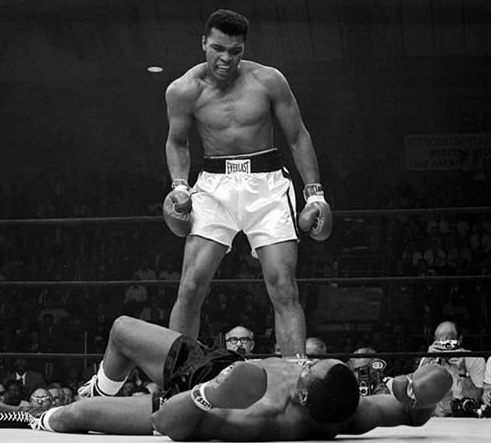
George Rickard is generally credited for recognizing the commercial possibilities of boxing matches in the 1900s. He promoted big fights that attracted public attention—and helped prize fighters like Jack Dempsey earn millions of dollars from prize fighting.
When boxing matches became part of regular TV programming, watching boxing matches became part of everyday culture and life.
Boxing as A Professional Sport
Today, boxing is used for recreation, fitness, and for fun – with different boxing styles like shadow boxing and sparring that make for great exercise options in a boxing gym.
But it is also a serious professional sport, with top matches offering millions of dollars in prize money. Aside from regular tournaments held by different boxing associations, it is also included in the Olympic games.
Boxing Rules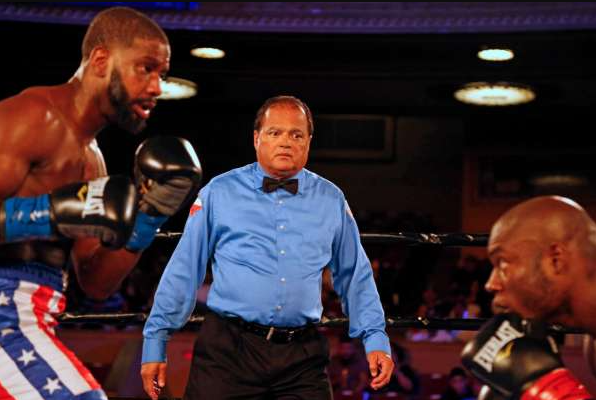
Boxers can only use their hands to land clean blows. They can’t use the elbow, head, shoulder, forearm or elbow, knee strikes, nor can they push or hold their opponent back. For obvious safety reasons, they can’t hit below the belt, in the kidney area, or on the back of the head or neck.
Boxing matches involve 12 rounds of three minutes each, with a one-minute break between rounds. The referee may also call for a five-minute rest for a player who was given a low blow.
Boxers can win by accumulating points which are awarded by the judging panel of up to three judges, or if their opponents are unable to continue with the fight. This is called a knockout.
There are two cases when a knockout is declared. A KO is when the boxer goes down on the floor and is unable to get up after 10 counts (KO). A TKO (technical knockout) is when the referee stops the fight because the boxer is too injured to properly defend himself.
Weight Divisions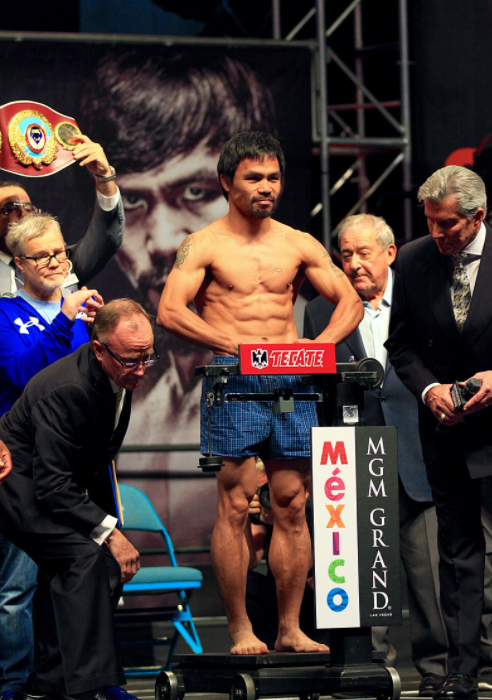
For fair play, and to remove any handicaps because of weight or size, professional boxers compete in different weight divisions as you might have seen in most international games.
This system started in the 19th century. Originally, the divisions were very broad. As the sport grew in popularity, the British and American boxing organizations added more. Today, there are 17 divisions, including:
- Minimum weight. 48 kilograms
- Light Flyweight. 49 kilograms
- Flyweight. 51 kilograms
- Super Flyweight. 52 kilograms
- Bantamweight. 53.5 kilograms
- Super Bantamweight. 55 kilograms
- Featherweight. 57 kilograms
- Super Featherweight. 59 kilograms
- Lightweight. 61 kilograms
- Super Lightweight. 63.5 kilograms
- Welterweight. 67 kilograms
- Super welterweight. 70 kilograms
- Middleweight. 72.5 kilograms
- Super Middleweight. 76 kilograms
- Light Heavyweight. 79 kilograms
- Cruiserweight. 91 kilograms
- Heavyweight. Unlimited
Olympic Boxing Matches Have only 10 Divisions:
- Light Flyweight. maximum 49 kilograms
- Fly Weight. maximum 52 kilograms
- Bantam Weight. maximum 56 kilograms
- Light Weight.maximum 60 kilograms
- Light Welterweight.maximum 64 kilograms
- Middleweight. maximum 165 pounds or 75 kilograms
- Light Heavyweight. maximum 178 pounds or 81 kilograms
- Heavyweight.maximum 91 kilograms
- Super Heavyweight. 202 pounds and higher
There are weight classes for women’s boxing, but these vary depending on the country, organization and the tournament.
Boxers must strictly meet the predetermined amount of weight required before a match. They are weighed in the day before, and if they are even a few grams above the maximum limit, they are given one hour to lose the excess weight.
If they are unable to do that, the match can push through if the opponent agrees. However, even if they do win, they can’t receive the championship title.
Boxing Federations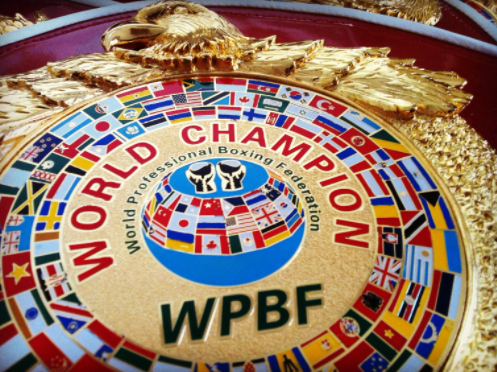
There are hundreds of boxing federations around the world, but the top four major bodies are:
- World Boxing Association (WBA). The oldest of the four, it was established in 1962 but has roots dating back to 1921.
- World Boxing Council (WBC). The WBC has hosted some of the most legendary fights in boxing history, and its champions include Muhammad Ali, Joe Frazier, Sugar Ray Leonard, Floyd Mayweather and Joe Calzaghe. All boxers dream of bringing home the WBC belt.
- boxing federation, and
- International Boxing Federation. This was established in 1983, and has 17 weight divisions.
- World Boxing Organization (WBO). Winners of the WBO title include Chris Eubank, Johnny Tapia, Naseem Hamed, Joseph Parker and Billy Joe Saunders.
The Dangers of Boxing
An ancient Greek urn—one of the oldest relics that mention or depict boxing—bears the inscription: “A boxer’s victory is gained in blood.”
That was certainly true for ancient fighting matches, which had no rules or formal training. However, modern boxing has more safety precautions, and under the supervision of a qualified coach, aspiring athletes can safely train for the sport.
But even in perfect training conditions, boxing does have risks. The repetitive blows to the face and head can lead to concussion and nerve damage. Right after knockout, a boxer may experience side effects like headaches, impaired hearing, nausea and memory loss.
The decades of head trauma can also lead to long-term, permanent damage. Studies show that about 10 to 20% of boxers also develop Boxer’s Dementia, which has similar symptoms to Alxheimer’s.
Boxing Today: From Fighting for the Trophy, to Fighting Fat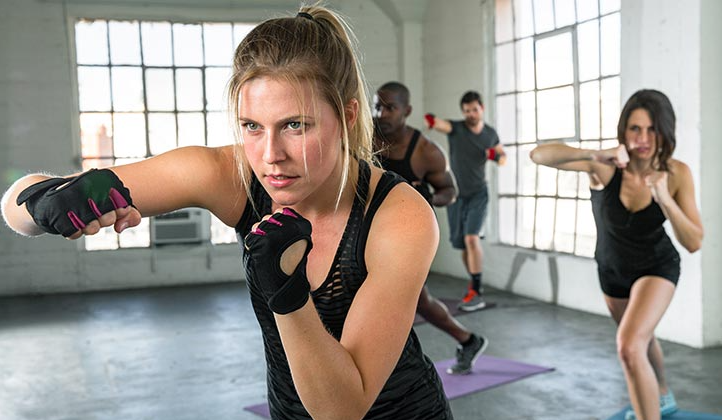
Today, boxing is not only much safer but also more accessible. People take boxing for exercise: it is good for the heart and the lungs, burns a lot of calories, helps individuals lose weight, and is overall a sport that involves working all muscle groups. Many cardio-based classes incorporate various types of boxing moves. You can throw it into the mix along with other workouts like jump rope, free weights or rowing machines workouts.
Boxing can also help in self-defense, although its movements do not prepare you for freeing yourself from an opponent who attacks from behind, or grabs your hands or wrists before you can take a punch. Nevertheless, it does help develop lightning reflexes and strength—both important if you ever find yourself in a dangerous situation.
All in all, boxing has grown from a violent fight to the death in an ancient arena, to a fun activity everyone can enjoy.
Related Readings:
- The One Punch Man Workout – The Myths, Truths & Should You Do It?
- I Did 100 Pushups, 100 Sit-Ups, and 100 Squats for 30 Days – Results and What I Learned!
- My Personal Chest & Leg Workout for A Big Chest & Toned Muscular Legs
- Why Are My Arms So Skinny? My Personal Strategy To Bulk Em Up
- Is It Okay to Workout Arms After Chest Day?
Ben Mayz
Hi there! I'm Ben, main author and chief editor at Fitlifefanatics.com. I have been obsessed with Strength Training and Fitness for 18 years now.
My passion for living a happy fit lifestyle is what made me realize that fitness is what I wanted for my future.
I went on to earn my Masters in Sports Training & Biomechanics.
My passion for Strength training & fitness and my love of helping others is what made me start Fitlifefanatics.
Here, myself, and a team of specialist aim to provide the most accurate, and actionable information possible in hopes to help foster the fitness community forward.
You can learn more about Fitlifefanatics on our About Page









